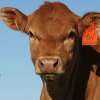
Corn futures were lower early on Monday. Pressure stems mostly from better than expected weekend rainfall of 1.0-3.0 inches across Cordoba, Argentina. This province is in central Argentina and is key growing area. Also, after an extended period of heat and dryness, forecasts call for improved chances for needed rain over the next 1-2 weeks, particularly in central and northeastern Argentina. Concern over U.S. corn and now DDG exports to China being rejected continues to weigh on the prices. However, last week’s export sales report showed strong sales even though sales to China were nil. March futures are drifting lower toward a test of Nov/Dec lows near $4.20. The March contract was 2 cents lower at $4.255/bushel. May was 2.25 lower to $4.335, while December 14 is 1.75 lower at $4.5325.
Better than expected rainfall across Argentina Friday into Sunday weighed on soybean future prices on Monday morning. Concern about dry weather damaging soybean crops in Argentina likely to be reduced with the weather forecasts suggested that significant rain will fall in Central and Eastern country for this coming week. In the meantime, lower Asian palm prices added additional downward pressure to the soy market. January soybeans fell 7.25 cents to $13.2425/bushel early Monday morning, while January soyoil inched down 0.06 cents to 38.96 cents/pound, and January soymeal skidded $1.3 to $444.4/ton.
The surplus wheat situation seemed to depress domestic wheat market. The implication of huge global supplies continued to weigh on the wheat prices. News reported by Russian Agricultural Ministry that Russia’s overall wheat production went up by 37% to exceed 54 million tonnes in 2013 further undercut prices. March CBOT wheat futures slipped 3.25 cent to $6.0575/bushel Sunday night, while March KCBT wheat futures were down 4.25 to $6.40, and March MWE futures declined 2.75 to $6.32.
Cattle futures are expected to open higher on Monday. Strength from higher hog futures in response to USDA’s friendly Hogs and Pigs report along with sharply higher cash trade late last week should support a higher opening for cattle futures. Cash cattle were $2 to $4 higher last week in the southern Plains trading from $132-$134 with the high end of the range in Texas. Cash trade in Nebraska surged $5-$6 higher to record highs of $135-$136. From a technical perspective, cattle futures have cleared a 2 ½ month downtrend resistance line drawn from the mid October high. The February contract is moving to challenge that high at $135.45. On Friday, February cattle futures were .80 cents higher to 134.94 with April .65 cents higher at 135.625. Meanwhile, January feeder cattle were .40 cents higher at 167.00 cents/pound, and March feeders were .60 cents higher at 167.80.
Hogs futures are expected to open steady to slightly higher. The quarterly USDA Hogs and Pigs report seemingly held bullish implications to the market due to the decline of overall hog population. The marketing head, breeding head and all hogs fell short of trade expectations. February hog futures are expected to rise 0.35 cents to 85.90 cents/pound in early Monday action, and June are expected to surge 0.10 to 100.35.
Cotton futures started the week higher. In the news, China will levy sliding duties on cotton imports from January 1 to stabilize its domestic market beyond the quotas in 2014. This certainly did not discourage the bulls. The continuing weakness of US currency supported the cotton market as well. March cotton added 0.25 cents to 84.37 cents/pound just after sunrise Monday, while July cotton increased 0.44 cents to 83.86.
